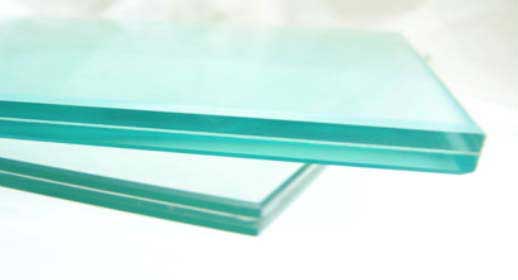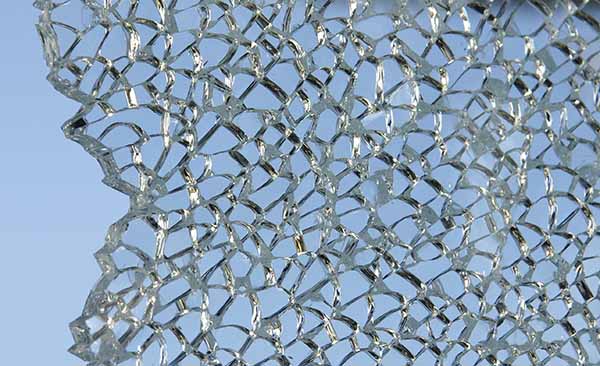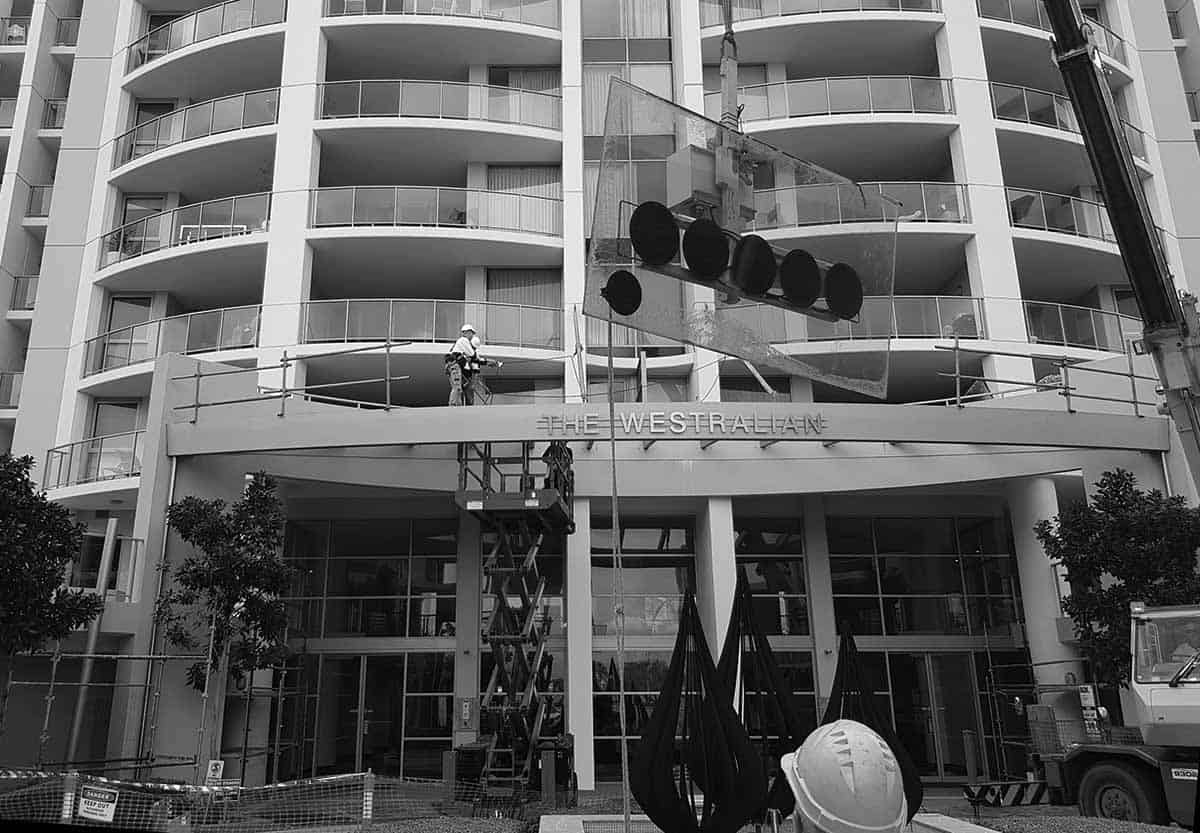Glass is a solid substance that’s made by heating normal sand until it turns into a liquid and then left to cool. It may be transparent or translucent and brittle.
Glass isn’t just a material that lets light into an area, but there are actually several types of glass used in the construction industry – each one serving a unique purpose.
Here, we’ll be looking at the types of glass, the engineering properties of each, as well as the advantages and disadvantages of using glass in construction.
What are the Types of Glass Used in Construction?
Choosing the right kind of glass for a certain application is crucial to achieving a finished job that’s effective, attractive, and safe.
The following are 14 types of glass used in construction:
Sheet Glass
Sheet glass is manufactured by having molten glass pass through rollers to produce a nearly flat finish. However, the action of the rollers does leave the resulting sheets with some degree of distortion.
Sheet glass can be cut via a glass cutter – no special equipment is needed. It’s usually available in a range of standard sizes.
Due to the relatively low cost of float glass and its lack of distortion, sheet glass is mainly used in glazing greenhouses and the like, where the visual distortion isn’t an issue as opposed to domestic windows etc.
Float Glass
Made from sodium silicate and calcium silicate, float glass is also known as soda-lime glass. The “float” name refers to the method used to produce it, where the molten glass is floated onto a bed of molten tin. This gives us a flat, clear, distortion-free glass.
Float glass can be cut utilizing a glass cutter without a need for special equipment. It’s available in thickness ranging from 2mm to 20mm, with a weight ranging from 6 to 36 kg/m².
The applications of float glass include fixed and opening windows above waist height, shop fronts, as well as public places.
Laminated Glass

As the name suggests, laminated glass consists of layers of ordinary glass bonded by a transparent, flexible material. Think of it as a sandwich made up of two or more sheets of glass.
Laminated glass can also be made using other types of glass (such as float, wired, or toughened), where they keep their original breaking attributes.
Laminated glass is also UV and soundproof, which explains its use in the construction of bridges and aquariums. It’s even the best choice for making glass canopies as it can reduce harmful rays.
At WA Special Projects we commonly use SGP for our totally frameless balustrading and fully frameless pool fencing such as out channel fixed range. SGP is a laminated glass consisting of 2 sheets of toughened glass and a laminate in the middle. This is typically 6mm toughened/2.28mm laminate/6mm toughened.
Shatterproof Glass
Shatterproof glass is just what it sounds like, a type of glass that’s resistant to shattering. In other words, it doesn’t break into sharp pieces in the event of destruction.
Manufacturing shatterproof glass involves the addition of a plastic polyvinyl butyral resin to prevent it from forming sharp pieces. It’s commonly used in windows, floors, and skylights.
Energy-efficient Glass
This type of glass is produced by glazing float glass with a special thin coating on one side. This coating allows solar energy to pass through in one direction while minimizing the transfer of thermal energy in the other direction.
Extra-clean / Self-cleaning Glass
Extra-clean or self-cleaning glass is both photocatalytic and hydrophobic. These two unique properties make it stain-proof, resulting in attractive appearance and easy maintenance.
Chromatic Glass
Used in ICUs and meeting rooms, chromatic glass can control the transparent efficiency to protect the interior from daylight. This type of glass may be electrochromic (has electric lamination), thermos-chromatic (has heat-sensitive lamination), or photochromic (has light-sensitive lamination).
Patterned Glass
Patterned glass is flat glass that’s been rolled onto one side during production. It’s available in many coloured tints and patterns, each with a distortion number from 1 to 5 (1 is very little distortion and 5 is a high degree of diffusion).
Patterned glass is used for decoration purposes, with or without added privacy.
Tinted Glass
Tinted glass is simply coloured glass. A certain type of ion is added to the normal glass mix to produce coloured glass, where the colour doesn’t affect other properties of the glass. For example, iron oxide gives green and sulphur gives blue.
Toughened Glass

Toughened glass, also called safety or tempered glass, is used extensively throughout the industry for its ability to resist breaking. If it does break, it does so into many small ‘safer’ pieces as opposed to large shards (like float glass).
Toughened glass is typically used in home interiors such as kitchen splashbacks (for its heat resistance), and shower screens, glass balustrade and swimming pool fencing.
It can also be used in laminated panels for extra safety precautions.
Wired Glass
Wired glass has a wire mesh in the middle of its glass structure. The purpose of the wire is to hold the glass together in the event of cracking or breaking, however, it doesn’t stop the glass from forming sharp pieces when broken.
Available as clear or obscured, wired glass is commonly used in more industrial areas or structures such as garages.
Glass Blocks
Otherwise called glass bricks, glass blocks are made from two halves pressed and annealed during the melting process of glass. The applications for glass blocks include walls and skylights, providing a pleasant aesthetic appearance when light passes through.
Glass Wool
Used as an insulating filler, glass wool is made out of glass fibres. It’s also fire-resistant.
Insulated Glazed Units
Also referred to as double-glazed glass, an insulated glazed unit consists of two or three layers separated by air or vacuum. This air or vacuum acts as a good thermal insulator, so this glass doesn’t allow heat to pass through it.
Mirrors
These are typically made from float glass of 4mm to 6mm thickness with one side silvered.
Why is Glass Used in Construction?
When used as a construction material, glass is employed as a transparent glazing element in the building envelope. This includes windows in external walls and internal partitions.
What is the Most Common Glass Used in Construction?
Float glass, also known as soda-lime glass, is the most widely used type of glass in construction.
What are the 5 Properties of Glass?
Glass has 5 engineering properties:
- Transparency: this is the primary property of glass that allows us to see through it. Glass can be transparent from both sides or from one side only (the other side acts like a mirror).
- Workability and Recycle Property: glass has superior workability as it can be moulded into countless shapes or blown during melting. Also, any type of glass can be 100% recyclable and used as a raw material in construction.
- Strength: the strength of glass is determined by its modulus of rupture value. Glass is usually brittle but we can make it stronger by adding admixtures and laminates.
- Transmittance: this is the visible fraction of light passing through the glass.
- U value: this represents how much heat transferred through the glass. Insulated glass units should have a low U value.
Wrap Up
There you have it – a complete guide to the types of glass used in the construction industry. It’s crucial to choose the right kind of glass that best serves your project. There are many things to consider, and, for obvious safety reasons, this should always be left to experts in this field.


